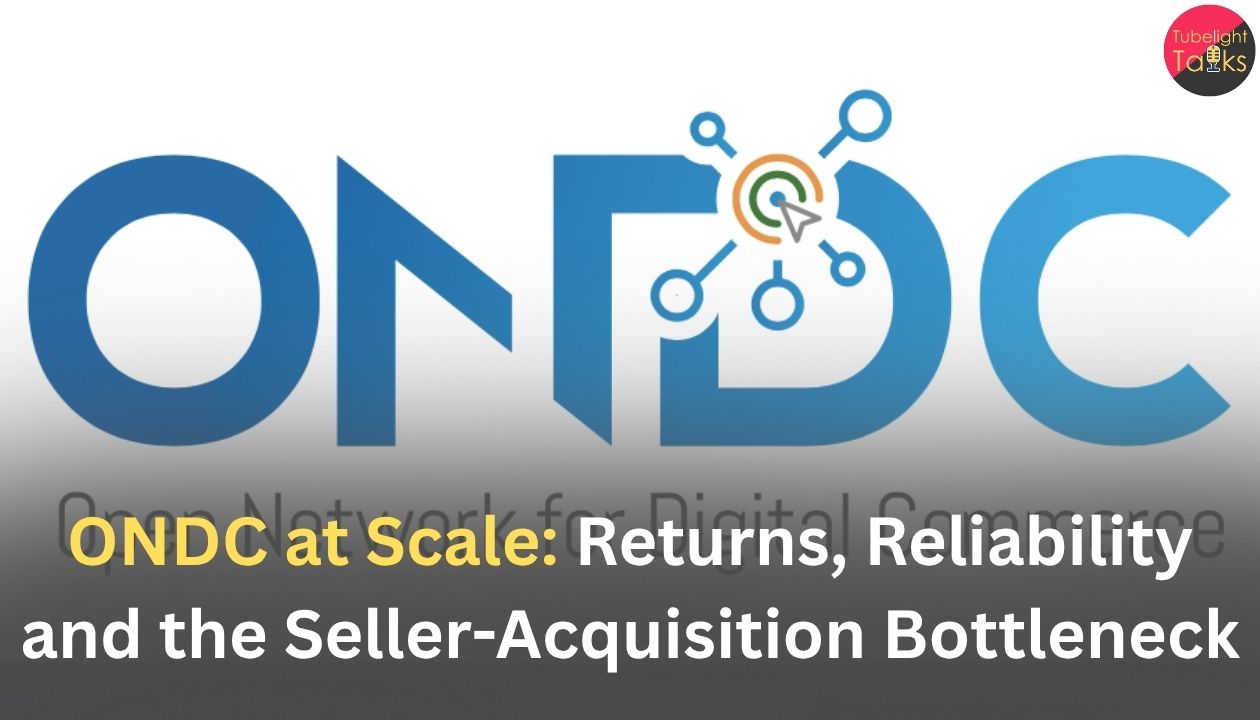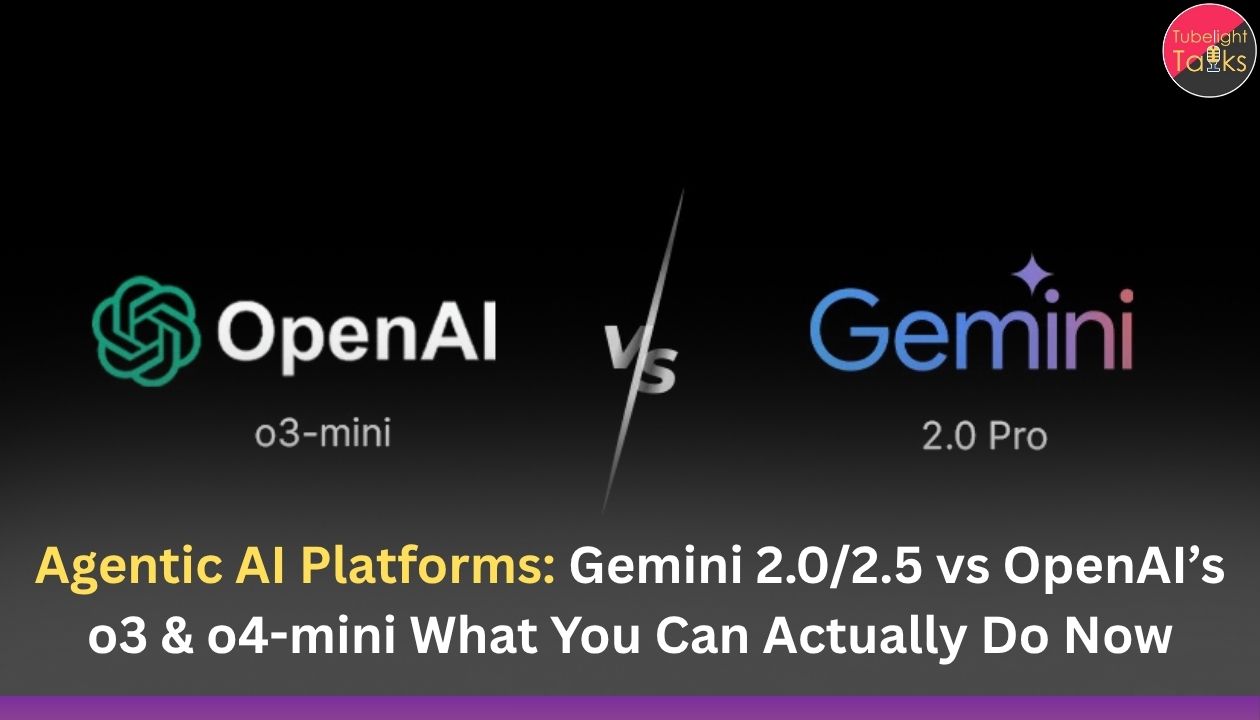ONDC at Scale: India’s Open Network for Digital Commerce (ONDC) was launched to do for e-commerce what UPI did for payments—break platform monopolies and let any buyer connect to any seller via any app. Today the network spans 600+ cities, 7.6+ lakh sellers and over 16 million monthly orders across 26 domains, from mobility and food to retail.
But as ONDC moves from pilot buzz to real-world scale, three tough problems are coming into sharp focus:
- High return and rejection rates,
- Inconsistent reliability and accountability, and
- A seller-acquisition and activation bottleneck, especially for small merchants.
The next phase of ONDC will be decided less by big launch numbers and more by how it solves these very operational, very unglamorous issues.
ONDC at scale: Big numbers, uneven traction
ONDC is designed as a digital public infrastructure—an open protocol where different buyer apps, seller apps and logistics providers plug into one interoperable network, instead of a single company owning the full stack like Amazon or Flipkart.
By late 2024–mid 2025, key metrics looked impressive:
- Reach: 600+ cities live; 26 domains including food, grocery, fashion, mobility and services.
- Participation: 7.6+ lakh sellers/service providers, with a strong skew towards MSMEs.
- Volumes:
- November 2024: ~14.45 million transactions in a month.
- August 2025: ~17.94 million transactions, driven heavily by mobility (11.8 million rides) and logistics (2.35 million orders). Retail orders, however, fell from 6.1 million (Aug 2024) to 3.76 million (Aug 2025).
- November 2024: ~14.45 million transactions in a month.
The signal is clear: mobility and logistics are scaling well; core retail commerce is more fragile.
The returns problem: When open networks meet messy reality
Early e-commerce pilots on ONDC saw high levels of order returns and rejections, especially in non-food retail. Sellers often did not track inventory in real time, leading to cancelled or altered orders after payment.
Three design realities make returns especially tricky on ONDC:
- Unbundled responsibilities
- Buyer app (e.g., Paytm, PhonePe, ONDC partner apps) owns the customer interface.
- Seller app (e.g., Magicpin, Mystore, other seller NPs) manages catalogue & pricing.
- Logistics player handles pickup, delivery and often reverse logistics.
- Buyer app (e.g., Paytm, PhonePe, ONDC partner apps) owns the customer interface.
- When an order is late, damaged or incorrect, buyers often struggle to know who is accountable. This ambiguity erodes trust faster than discounts can rebuild it.
- Early-stage seller behaviour
- Many merchants treat ONDC as an “extra channel” and don’t align inventory, store timings or customer support workflows.
- In early testing, some sellers were slow to respond to queries or didn’t process cancellations and returns quickly, raising return and rejection rates even inside closed user groups.
- Many merchants treat ONDC as an “extra channel” and don’t align inventory, store timings or customer support workflows.
- Customer expectations shaped by Big Tech
Users are accustomed to Amazon/Flipkart-style guarantees: easy returns, single-window support and predictable refunds. ONDC, in contrast, is still building out robust dispute resolution norms and shared service-level agreements (SLAs).
Net effect:
ONDC’s open architecture makes it powerful—but also fragile. Unless returns and grievances feel simpler, not harder, than existing platforms, buyers will use ONDC for opportunistic deals and drift back to closed platforms for high-value purchases.
Reliability gap: Incentives, exits and UX friction
Through 2023–24, ONDC leaned heavily on network incentives—discounts for buyers and incentives for network participants—to drive volumes in food and grocery. In 2024, these were recalibrated downward to conserve cash and push for sustainability, followed by a small per-transaction network fee from January 2025.
At the same time, a series of high-profile exits—including the non-executive chairperson in late 2024 and senior executives like the CEO and CBO in early 2025—sparked questions on strategy and execution stability.
Reliability challenges show up in three ways:
- Inconsistent UX across buyer apps – Each buyer app designs its own interface, support flow and communication style. The ONDC brand carries expectations, but the experience is fragmented.
- Patchy grievance redressal – With no single owner of end-to-end experience, disputes can bounce between buyer app, seller app and logistics.
- Domain imbalance – Mobility and logistics are surging, but retail commerce has seen declining order volumes despite network growth, suggesting experience issues outweigh discovery gains in some categories.
In short, scale has arrived before maturity of the reliability stack.
The seller-acquisition and activation bottleneck
On paper, seller growth looks impressive: lakhs of sellers, most of them MSMEs, are now on the network.
But there are two hidden bottlenecks:
- Onboarding vs. true activation
- Many small merchants have been “digitally onboarded” (catalogue created, QR stuck at the counter) but are not consistently active—stock not updated, order alerts missed, or support unanswered.
- Complexity of ONDC protocols and integration requirements creates a learning curve far steeper than simply signing up on a single marketplace.
- Many small merchants have been “digitally onboarded” (catalogue created, QR stuck at the counter) but are not consistently active—stock not updated, order alerts missed, or support unanswered.
- Economics after incentives taper off
- When network incentives are high, seller apps and aggregators actively chase merchants and hand-hold them.
- As incentives shrink and a network fee kicks in, seller apps have to fund seller education, onboarding and success programs out of thinner margins.
- When network incentives are high, seller apps and aggregators actively chase merchants and hand-hold them.
This creates a classic chicken-and-egg problem:
- Without a critical mass of reliable sellers, buyer apps hesitate to push ONDC aggressively.
- Without steady orders, many small sellers see ONDC as “extra work with no guaranteed payoff” and drop off.
Unless the ecosystem cracks “seller success at scale”, ONDC risks having many registered sellers but too few dependable ones.
What ONDC and the ecosystem are trying
Despite these headwinds, there are real moves underway to tackle bottlenecks:
- Interoperable QR codes – ONDC’s QR lets small shops go online and be discovered across buyer apps using a single code, lowering discovery friction.
- Saarthi & multilingual tools – A reference buyer app built with Bhashini to help create multilingual interfaces (Hindi, English, Marathi, Bangla, Tamil, etc.), making onboarding easier in non-English markets.
- Digital lending on ONDC – Integrations with lenders so that MSMEs can get small working-capital loans in minutes, using their ONDC transaction history as signal.
- Sector-specific programs – From F&B and grocery to gaming (“gCommerce”) and financial products, ONDC is pushing deeper into verticals where repeat use and strong unit economics are more likely.
These steps push ONDC closer to being a “commerce operating system” rather than just another marketplace. But to unlock its true potential, the network now has to shift gears from growth at any cost to trust, reliability and seller productivity.
What must change next: From protocols to practice
For ONDC to truly become India’s “UPI for commerce”, three priorities now dominate the roadmap:
- A stronger reliability & returns stack
- Clear, shared SLAs on delivery times, refunds and returns across all network participants.
- Simple, single-window grievance experience for buyers, even if settlement happens behind the scenes between apps.
- Better catalog and inventory validation tools to reduce out-of-stock and wrong-item scenarios.
- Clear, shared SLAs on delivery times, refunds and returns across all network participants.
- Seller success and hand-holding, not just onboarding
- Structured programs for MSMEs: training, templates, vernacular helpdesks and analytics dashboards that show what to fix.
- Incentives tied to service quality (on-time fulfillment, low return rates, good ratings), not just raw order counts.
- Structured programs for MSMEs: training, templates, vernacular helpdesks and analytics dashboards that show what to fix.
- Open-network governance and transparency
- Public dashboards that show not just volumes, but also cancellation rates, average resolution time and dispute outcomes by domain.
- Stronger participation from state governments, industry bodies and startup ecosystem in building playbooks for different categories.
- Public dashboards that show not just volumes, but also cancellation rates, average resolution time and dispute outcomes by domain.
If ONDC can make “trust by default” its next design principle, the current pain points can turn into a natural part of its learning curve—not a verdict on the model itself.
Commerce as responsibility, not just transaction
From a spiritual lens, the real test of any economic system is simple:
- Does it reduce exploitation?
- Does it give the smallest, least powerful player a fair chance?
Teachings by saints like Sant Rampal Ji Maharaj repeatedly emphasise three values in worldly dealings:
- honest description of goods and services, no hidden conditions.
- fair prices and timely fulfilment of promises.
- remembering that behind every order is a real human being, not just a “user”.
An open network like ONDC can align with this Dharma of commerce only when:
- Sellers see online trade not merely as “order grabbing” but as sewa—serving customers with integrity.
- Platforms and apps design policies that protect both buyer and small seller from unfair practices.
- Data and algorithms are used to promote trust and transparency, not just to maximise short-term conversions.
If these values are woven into ONDC’s rules, training and incentives, it can become more than a tech protocol—it can be a societal infrastructure that supports honest livelihoods for millions of small traders.
FAQs: ONDC an open network protocol
1. What is ONDC and how is it different from Amazon or Flipkart?
ONDC is an open network protocol, not a single company. Multiple buyer apps, seller apps and logistics providers plug into a common standard so that any buyer can discover any seller through any compatible app. Amazon and Flipkart, by contrast, are closed platforms that own the full stack—catalogue, payments, logistics and customer support—under one brand.
2. Why are returns and rejections such a big issue on ONDC?
Early pilots showed high return and rejection rates in e-commerce because sellers were not fully aligned on inventory management and response times, and responsibilities are split between buyer apps, seller apps and logistics partners. This makes it harder to quickly fix problems like wrong items, delays or damaged goods, especially compared to single-platform giants.
3. What is the seller-acquisition bottleneck?
While lakhs of sellers are technically onboarded, many are not truly active—catalogues are incomplete, stock is not updated and orders may be missed. ONDC’s protocols are more complex than simply signing up on one marketplace, and as incentives taper off, seller apps have fewer resources to provide deep hand-holding. The challenge is shifting from “onboard many” to “make many reliable and successful.”
4. Is ONDC a failed experiment?
It’s too early to call ONDC a failure or success. The network has achieved significant scale in mobility and logistics and respectable volumes in food and grocery, but retail e-commerce has been more volatile, with declining orders even as participation grows. The next 2–3 years—focused on reliability, returns, governance and seller success—will decide whether it becomes a transformative public good or remains a niche layer in India’s digital economy.
5. What should small sellers keep in mind before joining ONDC?
Treat ONDC as a serious channel, not a side experiment—keep stock, timings and support in sync.
Invest in clear product information and good service to control returns and ratings.
Use analytics and training offered by seller apps to understand what works.
Focus on long-term trust: on an open network, reputation can travel far—positively or negatively.










